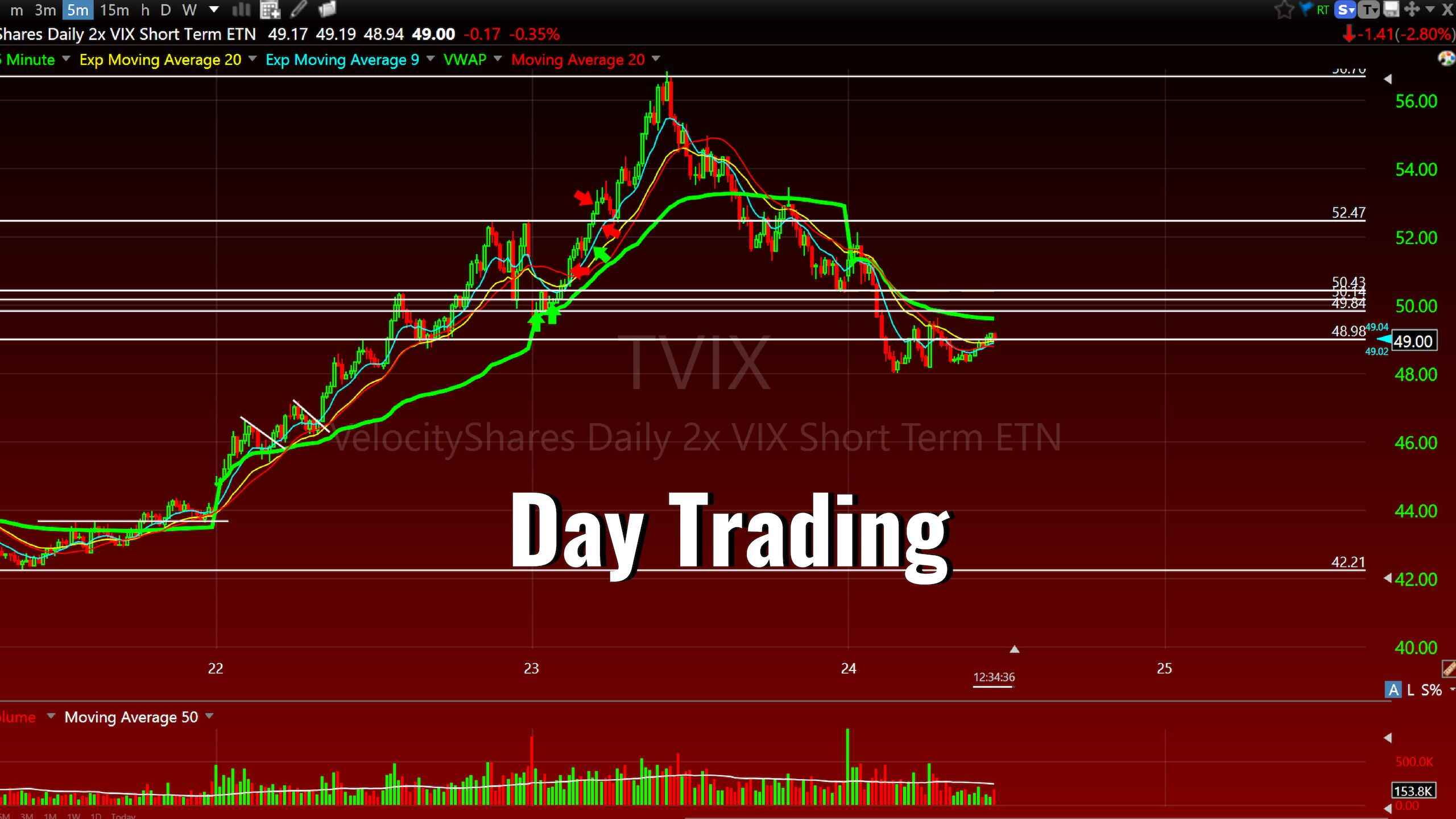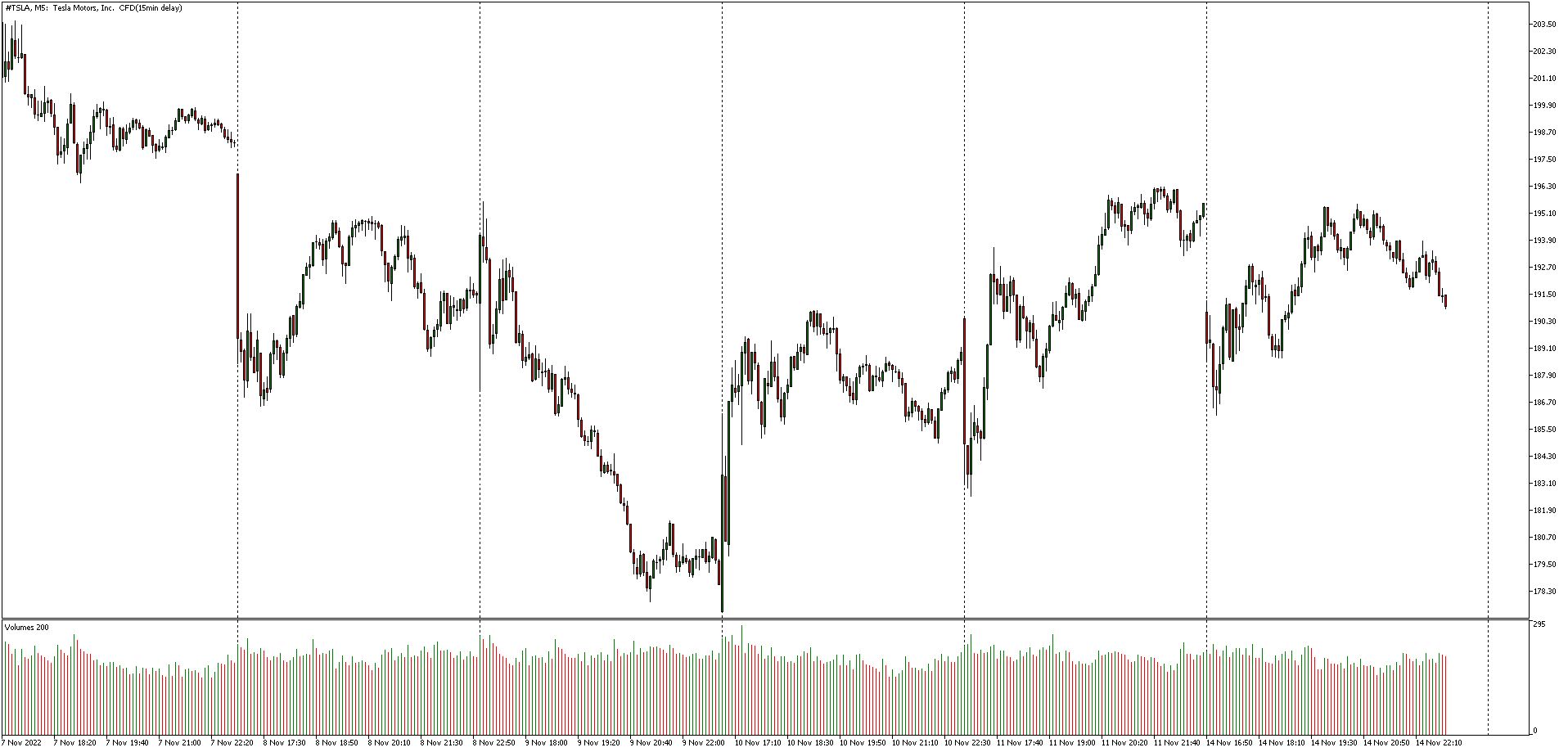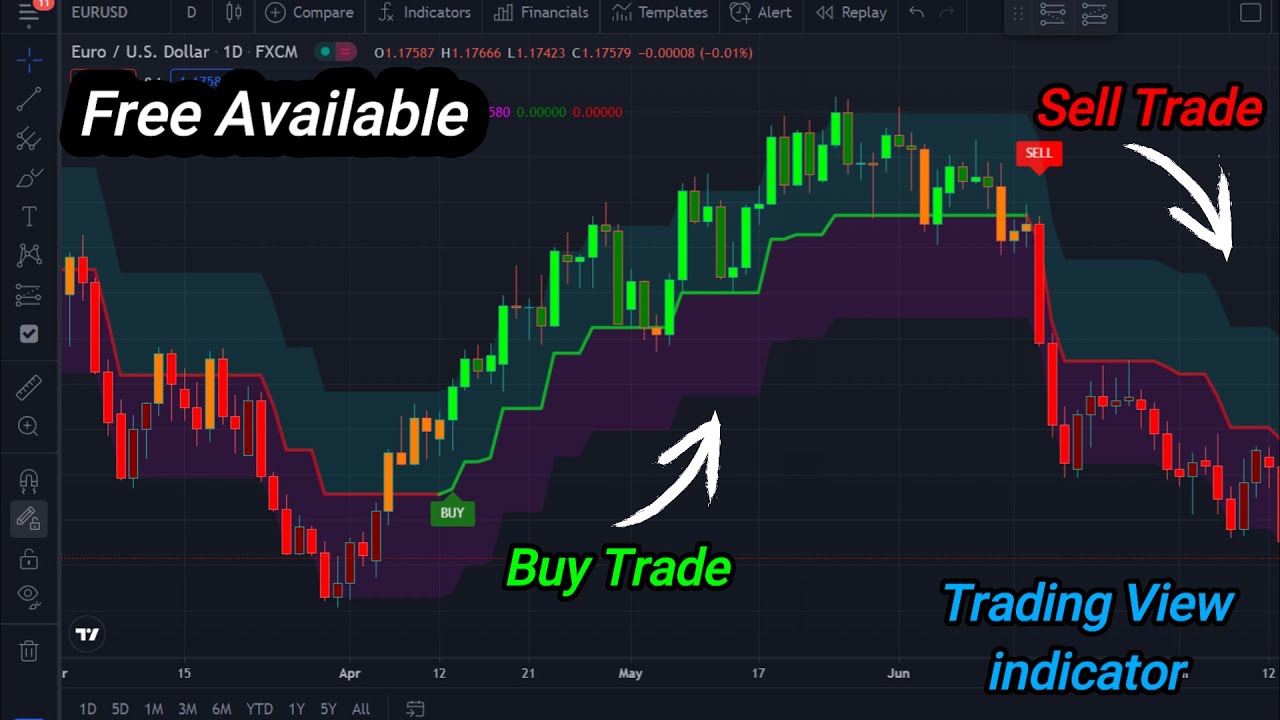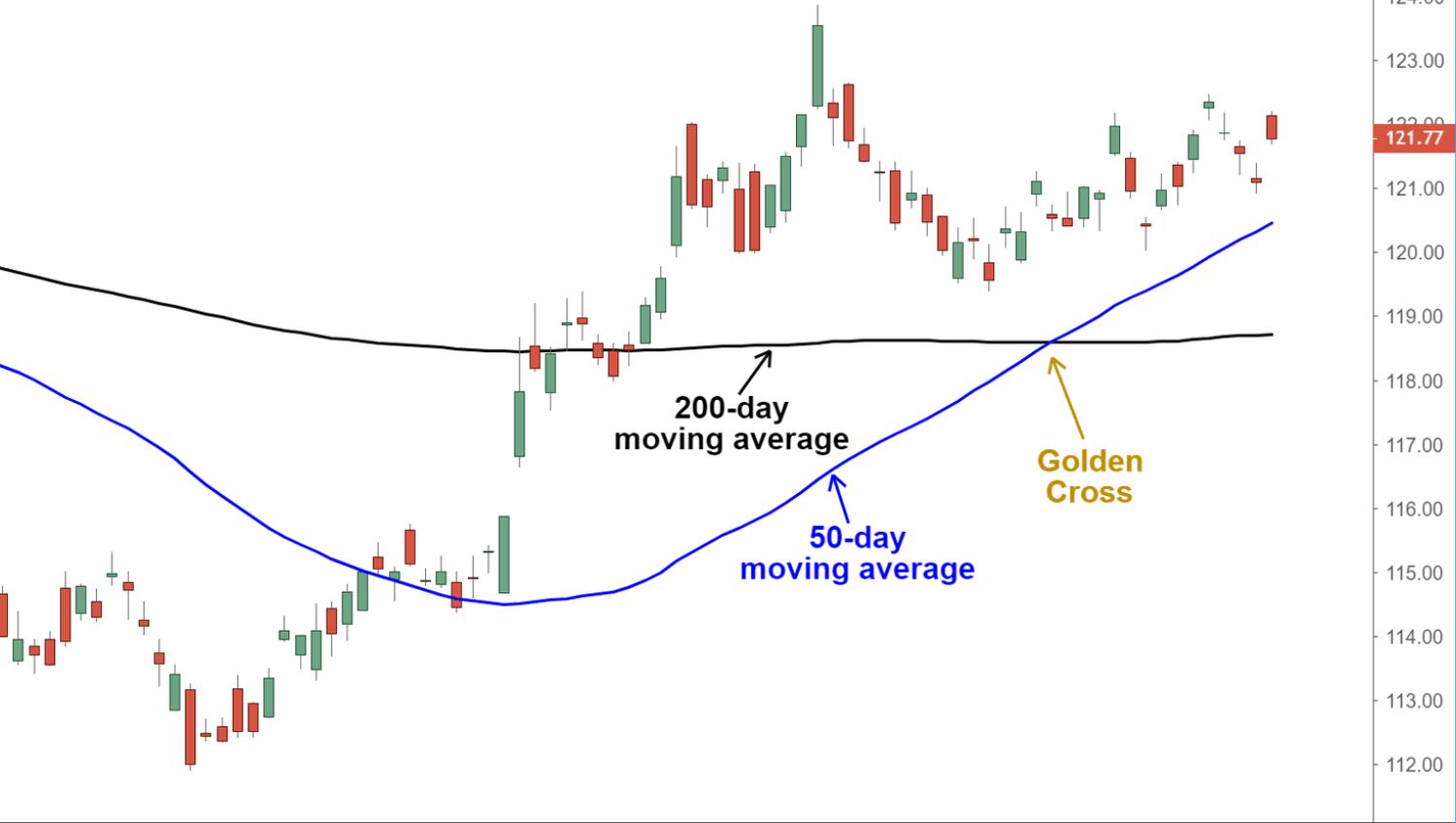Introduction
Welcome to the world of day trading, where opportunities for financial independence and strategic decision-making abound. Day trading, as the name suggests, involves buying and selling financial instruments within the same trading day, with the aim of profiting from short-term price fluctuations. It is a fast-paced and dynamic form of trading that requires quick thinking, discipline, and a solid understanding of the markets.
Day trading has gained popularity in recent years, thanks to advancements in technology and increased accessibility to financial markets. With just a few clicks, individuals can now trade stocks, currencies, commodities, and other financial instruments from the comfort of their own homes. This has opened up new possibilities for those seeking to grow their wealth and take control of their financial futures.
However, day trading is not without its risks and challenges. It requires careful analysis, risk management, and emotional control. It is important to have a well-defined strategy and to constantly adapt to market conditions. In this guide, we will delve into the world of day trading, explore its benefits and pitfalls, and provide important insights and tips to help you navigate this exciting and potentially lucrative endeavor.
Whether you are a seasoned investor looking to expand your trading horizons or a beginner taking your first steps into the world of trading, this guide will serve as a valuable resource. From understanding the basics of day trading to implementing effective strategies and avoiding common mistakes, we will cover it all.
So, get ready to embark on a journey that will challenge your analytical skills, test your emotional resilience, and potentially reward you with financial success. Let’s explore the exciting world of day trading together!
What is Day Trading?
Day trading is an active trading strategy that involves buying and selling financial instruments, such as stocks, currencies, or commodities, within the same trading day. Unlike long-term investing, which focuses on holding assets for extended periods, day traders aim to profit from short-term price fluctuations. They capitalize on intraday market movements to generate profits, often making multiple trades in a single day.
Day trading requires a hands-on approach and demands constant monitoring of market data, news, and technical indicators. Traders use various techniques, such as technical analysis and chart patterns, to identify potential trading opportunities. They seek to exploit price volatility and take advantage of small price movements to make quick profits.
One of the primary reasons why individuals opt for day trading is the potential for high returns. With the right strategies, tools, and knowledge, day traders can generate substantial profits in a short amount of time. However, it is essential to note that day trading also carries significant risks, and not all traders achieve consistent success.
Successful day trading requires a combination of skill, discipline, and experience. Traders must possess a deep understanding of the markets they are trading, as well as sound risk management techniques. It is also vital to develop a trading plan with clear entry and exit points, along with risk/reward ratios that align with personal trading goals.
It is important to differentiate day trading from other trading styles, such as swing trading or long-term investing. While swing traders hold positions for several days or weeks, day traders close all their positions by the end of the trading day. This short-term approach requires traders to stay focused and make rapid decisions, often relying on technical analysis and real-time market data.
The popularity of day trading has increased in recent years due to technological advancements and the accessibility of online trading platforms. These platforms provide users with real-time market data, advanced charting tools, and the ability to execute trades swiftly. Additionally, the availability of leverage allows traders to amplify their positions and potentially enhance their profits, although it also increases the level of risk involved.
By understanding what day trading entails and the key elements involved, traders can make informed decisions and pursue this trading strategy with confidence. However, it is essential to note that success in day trading is not guaranteed, and individuals should approach it with caution, proper knowledge, and a realistic understanding of the risks involved.
How Does Day Trading Work?
Day trading involves a series of steps and strategies that traders employ to execute trades within a single trading day. The process typically includes the following key elements:
- Market Analysis: Day traders start their day by conducting thorough market analysis. This involves studying financial news, analyzing charts, and identifying potential trading opportunities based on technical and fundamental indicators.
- Trade Execution: Once a trading opportunity is identified, day traders execute their trades. This can be done through online trading platforms that provide real-time market data and the ability to place trades quickly. Traders can choose between market orders, which are executed immediately at the current market price, or limit orders, which are executed at a specific price level.
- Monitoring: Throughout the trading day, day traders closely monitor their positions. They track the performance of their trades, keep an eye on market conditions, and adjust their strategies accordingly. Monitoring is crucial to identify potential profit-taking opportunities or to cut losses if the trade is not going as planned.
- Risk Management: Day traders employ various risk management techniques to protect their capital and minimize potential losses. This includes setting stop-loss orders, which automatically trigger the sale of a position if the price reaches a predetermined level, and implementing position sizing strategies to control the amount of capital at risk in each trade.
- Profit-Taking: Day traders aim to capitalize on short-term price movements, often taking profits quickly once a trade reaches their desired profit target. This may involve scaling out of a position, where traders sell a portion of their holdings to lock in profits while leaving the rest open to potentially capture further gains.
- Constant Learning and Adaptation: Successful day traders are continuously learning and adapting their strategies to evolving market conditions. They analyze the results of their trades, identify areas for improvement, and refine their approaches. This ongoing learning process is crucial to staying ahead in the fast-paced world of day trading.
It is important to note that day trading can be both rewarding and challenging. Traders must have a solid understanding of technical analysis, risk management techniques, and the psychology of trading. Emotional control, discipline, and the ability to quickly react to changing market conditions are also essential for success.
Furthermore, day traders should have a comprehensive understanding of the financial instruments they are trading, as well as the rules and regulations governing the financial markets. Each market has its own nuances and characteristics, and staying informed about these factors is crucial for making informed trading decisions.
By following a well-defined trading plan, employing sound risk management strategies, and constantly analyzing and adjusting their approaches, day traders can potentially profit from short-term price movements and achieve their trading goals.
Advantages of Day Trading
Day trading offers several advantages that make it an attractive option for many traders looking to actively participate in the financial markets. Below are some key advantages of day trading:
- Potential for High Returns: Day traders have the opportunity to generate significant profits in a short amount of time. By capitalizing on intraday price movements, day traders can take advantage of small fluctuations to make quick, meaningful gains.
- Liquidity: The financial markets are highly liquid, especially the stock market and major currency markets. This liquidity allows day traders to enter and exit positions quickly, ensuring that they can execute trades at desired prices.
- Flexibility: Day trading offers flexibility in terms of time and schedule. Unlike other investment approaches, day trading does not require long-term commitments or holding positions overnight. Traders can choose to dedicate a few hours a day to day trading, enabling them to pursue other interests or engage in additional income-generating activities.
- Independent Decision-Making: Day trading allows individuals to take control of their own trading decisions. Traders are not reliant on fund managers or financial institutions to make investment choices. This autonomy enables traders to react quickly to market conditions and adapt their strategies as needed.
- Opportunity to Learn and Grow: Day trading provides a unique opportunity for continuous learning and personal growth. Traders must stay updated on market news, learn new trading strategies, and constantly analyze their trading performance. This ongoing learning process helps traders improve their skills and expand their knowledge of the financial markets.
- No Overnight Risk Exposure: Unlike swing trading or long-term investing, day traders do not carry positions overnight. This eliminates the risk of overnight events, such as earnings reports or geopolitical developments, adversely affecting their trades. Day traders close all positions before the end of the trading day, mitigating the potential impact of unexpected market movements.
It’s important to note that while day trading offers these advantages, it also comes with certain risks and challenges. The fast-paced nature of day trading requires traders to make quick decisions, manage emotions effectively, and continuously adapt to market conditions. Proper risk management techniques and a comprehensive understanding of the markets are crucial for success in day trading.
By leveraging the advantages of day trading and combining them with a disciplined approach, traders can potentially achieve their financial goals and participate actively in the exciting world of trading.
Risks and Challenges of Day Trading
While day trading offers the potential for high returns and flexibility, it is essential to recognize and understand the risks and challenges that come with this trading approach. The following are some of the key risks and challenges that day traders may face:
- Market Volatility: Day trading relies on short-term price movements, and these movements can be highly volatile. Sudden and unpredictable market fluctuations can result in significant losses if trades are not properly managed or if stop-loss orders are not in place. Traders must be prepared for rapid market changes and have risk management strategies to mitigate potential losses.
- Emotional Control: Day trading can evoke intense emotions, such as fear and greed, as traders make split-second decisions. It is crucial to maintain emotional control and avoid making impulsive trades based on these emotions. Developing a disciplined approach and sticking to a well-defined trading plan can help manage emotional reactions and make rational decisions.
- Financial Risk: Day trading involves risking capital on a regular basis. Losses incurred during unsuccessful trades can quickly erode profits and, in some cases, exceed the initial investment. Traders must be prepared for potential losses and only risk capital that they can afford to lose.
- High Trading Costs: Frequent trading can result in substantial trading costs, including commissions, fees, and spread. These costs can significantly eat into profits, especially for traders with smaller trading accounts. Traders should carefully consider the costs associated with day trading and assess their impact on overall profitability.
- Time Commitment: Day trading requires dedicated time and attention. Traders must closely monitor the markets, analyze data, and execute trades during market hours. This can be challenging for individuals with other commitments or limited availability. Day traders should be prepared to allocate sufficient time for research, monitoring, and trading activities.
- Information Overload: The financial markets are flooded with information, news, and analysis from various sources. Sorting through this vast amount of information and identifying reliable sources can be overwhelming. Traders must develop the ability to filter information effectively and focus on pertinent data that aligns with their trading strategies.
It is essential for day traders to understand these risks and challenges and take appropriate measures to mitigate them. This includes implementing risk management tools and techniques, maintaining emotional control, and continuously improving their knowledge and skills through education and practice.
Managing the risks and challenges of day trading requires discipline, patience, and a willingness to learn from both successes and failures. By approaching day trading with a realistic mindset and employing effective risk management strategies, traders can increase their chances of attaining long-term success in this dynamic and potentially rewarding trading style.
Key Strategies for Successful Day Trading
Successful day trading requires a combination of solid strategies and disciplined execution. Below are some key strategies that can help increase the chances of success in day trading:
- Develop a Trading Plan: A well-defined trading plan is essential for day traders. It should outline trading goals, risk tolerance, entry and exit criteria, and position sizing strategies. A trading plan helps traders maintain discipline, avoid impulsive decisions, and stay focused on their long-term objectives.
- Use Technical Analysis: Technical analysis involves analyzing historical price patterns and market data to identify potential entry and exit points. Traders use various indicators, such as moving averages, trend lines, and oscillators, to assess market trends and make informed trading decisions. Technical analysis helps traders spot potential opportunities and manage risk effectively.
- Implement Risk Management Techniques: Risk management is crucial in day trading to protect capital and minimize losses. Traders should set stop-loss orders to automatically exit trades if prices move against them. Additionally, they should avoid risking a large percentage of their capital on any single trade, as this can lead to significant losses. A risk-reward ratio should be determined for each trade to ensure that potential profits outweigh potential losses.
- Focus on Liquid Markets: Liquidity is important for day trading as it allows traders to enter and exit trades easily. Traders should focus on liquid markets with high trading volumes, such as major currency pairs or heavily traded stocks. High liquidity ensures that traders can execute trades at desired prices without significant slippage.
- Practice Proper Money Management: Money management is critical for sustained success in day trading. Traders should allocate an appropriate percentage of their trading capital to each trade, considering the potential risk and reward. They should also avoid overtrading or chasing losses, as this can lead to reckless decision-making and emotional trading.
- Continuous Learning and Adaptation: Successful day traders continuously learn and adapt to changing market conditions. They stay updated on market news, study trading books and resources, and analyze their trading performance to identify areas for improvement. Continuous learning and adaptation help traders refine their strategies and enhance their skills over time.
- Control Emotions: Emotional control is crucial in day trading. Traders must learn to manage and control emotions such as fear and greed, as they can cloud judgment and lead to impulsive decisions. Sticking to a trading plan, practicing patience, and avoiding revenge trading are essential for maintaining emotional stability.
It is important for day traders to understand that no strategy guarantees success in the financial markets. The key is to find a strategy that aligns with an individual’s style, risk tolerance, and trading goals. Traders should also be prepared for losses and view them as part of the learning process, making adjustments and improving their strategies accordingly.
By implementing effective strategies, managing risk diligently, and focusing on continuous improvement, day traders can enhance their chances of achieving consistent profitability and long-term success.
Essential Tools and Resources for Day Trading
Day trading requires the use of various tools and resources to effectively analyze the markets, execute trades, and manage risk. Below are some essential tools and resources that can support day traders in their trading journey:
- Real-Time Data and Charts: Access to real-time market data and charts is crucial for day traders. This includes real-time price quotes, bid-ask spreads, volume data, and historical price charts. These tools enable traders to make informed trading decisions based on up-to-date market information.
- Trading Platform: A reliable trading platform is essential for executing trades efficiently and managing positions. The trading platform should provide quick order execution, real-time market data, customizable charts, technical analysis tools, and risk management features. Traders should choose a platform that suits their trading style and preferences.
- News and Economic Calendars: Staying updated on market news and economic events is crucial for day traders. Access to reliable news sources and economic calendars helps traders identify potential market-moving events and adjust their trading strategies accordingly. These tools provide insights into economic data releases, central bank announcements, and political developments that can impact financial markets.
- Technical Analysis Tools: Day traders often rely on technical analysis to identify trading opportunities. Technical analysis tools include various indicators, charting patterns, and oscillators. Traders should select tools that align with their trading strategies and help them analyze price trends, support and resistance levels, and market momentum.
- Level 2 Quotes: Level 2 quotes provide deeper insights into market liquidity and order flow. This tool displays the bids and asks for a specific security, allowing traders to gauge supply and demand dynamics. Level 2 quotes can be useful for identifying potential areas of support or resistance and assessing the market’s willingness to buy or sell at specific price levels.
- Financial News and Analysis: Subscribing to reputable financial news outlets and analysis platforms keeps traders informed about relevant market news, industry trends, and expert insights. These resources provide valuable information that can influence trading decisions and help traders stay ahead of market developments.
- Risk Management Tools: Effective risk management is crucial for successful day trading. Risk management tools such as stop-loss orders and trailing stops help protect capital and limit potential losses. Traders should also utilize position sizing calculators to determine appropriate trade sizes based on risk tolerance and account equity.
- Demo Accounts: Demo accounts are practice accounts offered by some brokers that simulate real market conditions. They allow traders to test their strategies, practice executing trades, and gain experience without risking real capital. Demo accounts are invaluable for new traders or those looking to refine their approaches before trading with real money.
It is important for day traders to carefully select the tools and resources that best suit their trading needs and objectives. Experimenting with different tools and evaluating their effectiveness can help traders optimize their day trading strategies and improve their overall performance.
Additionally, continuous learning and staying updated on the latest market developments through books, online courses, webinars, and trading communities can provide valuable insights and enhance a trader’s skill set. Engaging with experienced traders and mentors can also offer guidance and unique perspectives.
By utilizing these essential tools and resources and continuously enhancing their knowledge and skills, day traders can make more informed trading decisions, effectively manage risk, and potentially increase their chances of success in the competitive world of day trading.
Tips for Getting Started in Day Trading
Getting started in day trading can be exciting yet challenging. It requires a solid understanding of the markets, effective strategies, and proper risk management. Here are some valuable tips to help you begin your day trading journey:
- Educate Yourself: Knowledge is key to success in day trading. Take the time to learn about different trading strategies, technical analysis, risk management, and market dynamics. Read books, take online courses, and follow reputable trading blogs and resources to enhance your understanding of the markets.
- Start with a Demo Account: Practice is essential before trading with real money. Opening a demo account allows you to experience the trading environment, test your strategies, and gain confidence without risking actual capital. Spend time familiarizing yourself with the trading platform and honing your skills before transitioning to a live account.
- Set Realistic Expectations: Understand that day trading is not a guarantee of overnight success or easy money. It requires dedication, discipline, and continuous learning. Set realistic expectations and focus on building consistent profitability over time rather than aiming for exceptional gains from the start.
- Start with a Small Trading Capital: Begin day trading with a small amount of capital that you can afford to lose. This reduces the emotional pressure and allows you to gain experience without risking a substantial amount of money. As you become more confident and profitable, you can gradually increase your trading capital.
- Master Risk Management: Managing risk is crucial in day trading. Set appropriate stop-loss levels for each trade and avoid risking more than a small percentage of your trading capital on any single trade. Consistently applying risk management techniques can help protect your capital and preserve your trading account.
- Focus on a Few Tradable Assets: Instead of trying to trade multiple markets at once, concentrate on a few assets that you understand well. This allows you to become familiar with their price patterns, liquidity, and trading characteristics. Develop expertise in specific markets to increase your odds of making profitable trades.
- Develop and Stick to a Trading Plan: A trading plan is vital for day trading success. Define your trading goals, strategies, risk tolerance, and money management rules. Clearly outline your entry and exit criteria for trades. Having a plan in place helps prevent impulsive decisions and ensures a disciplined approach to trading.
- Keep Emotions in Check: Emotions can negatively impact trading decisions. Avoid making trades based on fear, greed, or revenge. Stick to your trading plan and avoid impulsive actions. Discipline and emotional control are essential in maintaining a calm and rational mindset during trading.
- Continuously Learn and Adapt: Day trading is an ongoing learning process. Stay updated on market news, explore new trading strategies, and be open to adapting your approach based on market conditions. Analyze your trading results and learn from both successful and unsuccessful trades to continually improve your skills.
- Start with Simpler Strategies: When starting out, focus on simpler trading strategies that are easier to understand and implement. As you gain experience and confidence, you can venture into more complex strategies. Mastering the basics first allows for a solid foundation upon which to build.
Remember, day trading is a journey that requires patience, perseverance, and continuous improvement. Take the time to develop your skills, manage risk effectively, and be diligent in your trading endeavors. With practice and a thoughtful approach, you can increase your odds of success in the exciting world of day trading.
Common Mistakes to Avoid in Day Trading
Day trading can be a profitable and fulfilling endeavor, but it is also filled with potential pitfalls. To increase your chances of success, it is important to avoid common mistakes that many day traders make. Here are some critical mistakes to steer clear of:
- Emotional Trading: Allowing emotions to drive your trading decisions is a recipe for disaster. Fear and greed can cloud judgment and lead to impulsive actions. Stay disciplined and stick to your trading plan, even during periods of volatility or when facing substantial gains or losses.
- Lack of Risk Management: Failing to implement proper risk management techniques can lead to significant losses. Always set stop-loss orders to limit potential losses on each trade. Avoid risking too much of your trading capital on any single trade. Remember that preserving capital is essential for long-term success.
- Overtrading: Trading excessively or impulsively is a common mistake. It is important to be selective and wait for high-probability trading setups that align with your strategy. Overtrading can lead to increased trading costs, emotional exhaustion, and decreased overall profitability.
- Ignoring Fundamental Analysis: While technical analysis is popular among day traders, disregarding fundamental analysis entirely can be a mistake. Important news events or economic releases can significantly impact market movements. Stay informed about key economic indicators and earnings reports that may affect the instruments you are trading.
- Chasing Losses: Trying to recoup losses from previous trades by immediately entering new trades is a dangerous practice. Avoid revenge trading and stay disciplined in following your trading plan. Analyze your losses objectively, learn from your mistakes, and make necessary adjustments for future trades.
- Trading Without a Plan: Day trading without a well-defined trading plan is akin to sailing without a compass. A trading plan helps you stay focused, set clear goals, and make rational decisions. It outlines your entry and exit strategies, risk tolerance, and position sizing guidelines. Trading without a plan leaves you vulnerable to impulsive and emotion-driven actions.
- Not Adapting to Market Conditions: Markets can change rapidly, and strategies that work well in one market environment may not perform as effectively in another. It is crucial to adapt your approach and trading strategies to evolving market conditions. Stay updated on market trends and be willing to make adjustments when necessary.
- Lack of Patience and Discipline: Day trading requires patience and discipline. It is important to wait for clear trading signals and not force trades. Avoid the temptation to enter trades merely to be active in the market. Stick to your trading plan, maintain trading discipline, and exercise patience to increase the probability of profitable trades.
- Not Keeping a Trading Journal: Failing to keep track of your trades and analyze your performance is a missed opportunity for growth. Keeping a trading journal allows you to review your trades, identify strengths and weaknesses, and make informed adjustments. Regularly reviewing your journal helps you learn from past experiences and refine your strategies.
- Overreliance on Indicators: While technical indicators are valuable tools, overreliance on them can lead to analysis paralysis. Using too many indicators or following them blindly can generate contradictory signals and confusion. Focus on a few key indicators that align with your trading strategy and use them in conjunction with other factors such as price action and market sentiment.
By avoiding these common mistakes, you can improve your decision-making process, manage risk effectively, and enhance your overall performance as a day trader. Remember that patience, discipline, and continuous self-improvement are key components of successful day trading.
Conclusion
Day trading is a thrilling and potentially rewarding approach to trading that allows individuals to capitalize on short-term price movements in various financial markets. It offers the opportunity for high returns, flexibility, and independent decision-making. However, it is not without its risks and challenges. Day traders must navigate market volatility, manage emotions, and implement effective risk management strategies to succeed in this fast-paced environment.
By following key strategies and utilizing essential tools and resources such as real-time data, technical analysis, risk management tools, and educational materials, day traders can enhance their chances of success. It is crucial to continuously learn and adapt, practicing emotional control and honing your trading skills.
Avoiding common mistakes, such as emotional trading, overtrading, and lack of risk management, is paramount. Instead, develop a comprehensive trading plan, exercise discipline, and remain patient in order to make well-informed trading decisions.
While day trading can be challenging, it offers the potential for financial independence and personal growth. With dedication, perseverance, and a commitment to continuous learning, day traders can navigate the dynamic world of trading and increase their likelihood of achieving long-term success.
So, whether you are a novice trader looking to explore the exciting field of day trading or an experienced investor seeking to expand your trading strategies, remember to approach day trading with a disciplined mindset and realistic expectations. With careful planning, practice, and a commitment to ongoing improvement, day trading can become a fulfilling and potentially profitable endeavor.

























